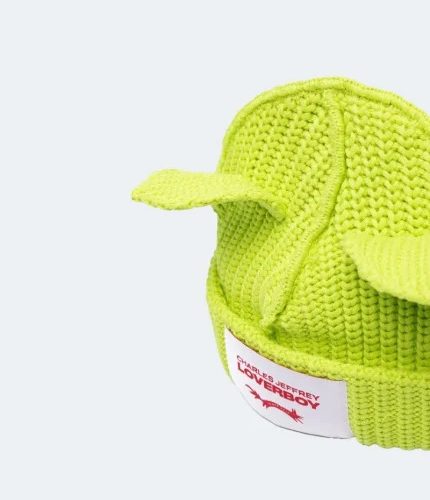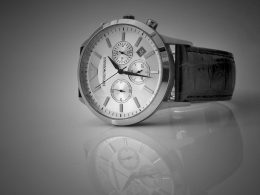Introduction: Not Just a Hat, But a Statement
In a world where fashion often adheres to rules, expectations, and trends dictated by fleeting popularity, the Loverboy hat bursts through the norm like a punk-rock anthem in a room full of elevator music. Created under the visionary lens of Charles Jeffrey—founder of the avant-garde fashion label Loverboy—this hat is not just a piece of headwear. It is an emblem of youth, rebellion, identity, queerness, and unfiltered self-expression. The Loverboy hat isn’t for the faint of heart or for those seeking to blend into the crowd. Rather, it is a piece that demands attention, sparks conversation, and, more often than not, elicits a double take from fashion-forward onlookers and skeptics alike.
The Roots of Loverboy: Where It All Began
To understand the significance of the Loverboy hat, one must first understand the soul of the brand itself. Charles Jeffrey Loverboy not just as a label, but as a cultural movement steeped in art, queerness, club culture, and emotional storytelling. Born out of the underground nightlife scene in London, the brand’s DNA is built on transformation, theatricality, and a fearless sense of play. The Loverboy hat embodies all these things—taking influence from Scottish folklore, punk aesthetics, and postmodern theatricality to present a piece that feels like part costume, part high fashion, and part protest.
From its early iterations on Jeffrey’s catwalks, the hat has evolved into a cult item, adored by stylists, celebrities, and boundary-pushing creatives. Often crafted with exaggerated features—long ears, eccentric patterns, whimsical materials—the hat becomes more than an accessory. It’s a bold punctuation mark to any outfit and a visual declaration of individuality.
Aesthetic Boldness: Ears, Shapes, and Playfulness
What instantly sets the Loverboy hat apart from any other fashion headwear is its audacious design. Oversized floppy ears inspired by animal motifs—especially rabbits and canines—are the hat’s most iconic feature. These ears aren’t merely stitched on for cute effect; they are deliberately exaggerated, standing tall or drooping down the sides in dramatic flair. It’s this very whimsy that transforms the wearer from a participant in fashion to a character in their own story.
Some versions of the hat are brightly colored, ranging from vivid fuchsia to acid green, while others employ patterns that reflect chaos, color theory, or even childlike scribbles. Materials vary too—felted wool, faux fur, mohair, tartan, and sometimes sequined fabrics lend each hat a unique presence. It’s maximalist. It’s playful. It’s radical. And that’s precisely the point.
Rather than try to conform, the Loverboy hat actively resists the beige monotony of mainstream fashion. It pushes the wearer to embrace fantasy, to play with gender, to reject subtlety, and to reclaim visibility. There’s power in choosing to be seen, and the Loverboy hat makes that choice impossible to ignore.
Cultural Significance: Queer Identity and Artistic Expression
The Loverboy hat is intrinsically tied to queer culture. Charles Jeffrey, a queer designer himself, channels the unrelenting energy of the LGBTQ+ community into his creations. The hat has become a badge of honor for many in the queer community—a visual form of protest, a symbol of liberation, and a celebration of difference. In a society where queerness is still politicized, every choice of self-presentation becomes inherently radical. The Loverboy hat, in its unapologetic loudness, serves as armor for those who refuse to be erased.
More than just fashion, the hat operates at the intersection of art and activism. It’s frequently spotted at pride parades, underground raves, and fashion week afterparties—not just because it’s trendy, but because it communicates authenticity. It is raw. It is untamed. It gives voice to an identity that doesn’t want to assimilate.
The Rise of the Cult Following: How the Loverboy Hat Took Over Fashion Circles
While originally a niche item, the Loverboy hat found its way into the closets of daring celebrities and stylists who recognized its disruptive charm. Pop stars, drag queens, and boundary-pushing influencers helped bring the hat into the spotlight. Social media, with its hunger for eye-catching visuals, amplified the reach of the hat almost overnight. A single post featuring someone in a Loverboy hat can go viral, not just because of the name behind it, but because of the instant reaction it provokes.
It wasn’t long before high-profile fashion editors began including it in editorial spreads. It became a staple in experimental fashion circles, worn not just for its aesthetic, but for what it symbolized—boldness, queerness, and the willingness to take risks. Unlike trend-driven fast fashion pieces that come and go with seasons, the Loverboy hat is consistently reimagined but never stripped of its core identity. It’s rare for an item this whimsical to also feel timeless, but somehow, this hat achieves just that.
A Symbol in the Age of Hyperindividualism
In our current era, where hyperindividualism is both celebrated and commodified, the Loverboy hat finds its perfect cultural moment. Young people especially are rejecting the bland uniformity of mass-produced fashion in favor of pieces that tell their story. They seek meaning in what they wear. The Loverboy hat, with its surrealist design and rebellious origins, resonates deeply in this landscape. It offers wearers a canvas for self-invention. Whether you’re channeling glam-punk, fairytale anarchist, or futuristic misfit, the Loverboy hat adapts and responds to your narrative.
Even in more traditional settings, the hat has found surprising appeal. Paired with tailored coats or minimalist outfits, it acts as a disruptive accessory that shatters expectations. This versatility is what makes the Loverboy hat so compelling—it can be styled with precision or thrown on for chaos. It thrives in contrast. It’s controlled disorder. And therein lies its beauty.
The Craft Behind the Chaos: Quality Meets Artistry
Despite its whimsical look, the Loverboy hat is a meticulously crafted item. Each piece reflects a high level of artistry, combining traditional techniques with bold experimentation. Many of the hats are handcrafted in the UK, and the attention to detail is unmistakable. From careful stitching on the ears to the use of luxurious materials, the quality is never compromised for the sake of novelty.
This craftsmanship is a nod to Charles Jeffrey’s appreciation of the past—of tailoring, of design discipline—even while the end result looks like something ripped from a surreal daydream. This duality, the respect for tradition and the desire to break it, is what gives the Loverboy hat its depth. It may look wild, but every inch of it is intentional.
Conclusion: Wearing Courage, One Ear at a Time
To wear a Loverboy hat is to make a choice—to be seen, to challenge the norm, to bring art into everyday life. It’s more than just a hat; it’s a mood, a philosophy, and a fearless self-declaration. In a world that often tries to narrow fashion into neat little boxes, the Loverboy hat explodes out of them with glitter, color, and pointed ears. It doesn’t whisper. It roars. And in that roar, it echoes a message that’s as vital today as ever: Be who you are, loudly and without apology.
Whether you’re discovering it for the first time or you’ve long been a devotee of its magic, the Loverboy hat remains one of the most iconic accessories of modern fashion. It is queer joy. It is creative chaos. It is wearable rebellion. And above all, it is a love letter to those bold enough to dream with their eyes open—and wear that dream on their head.










